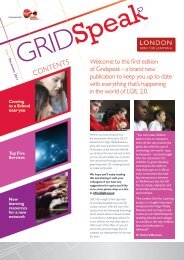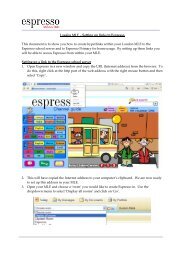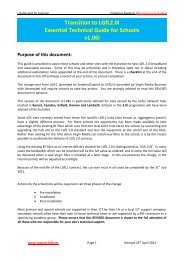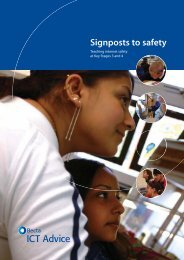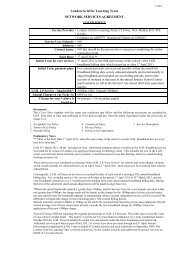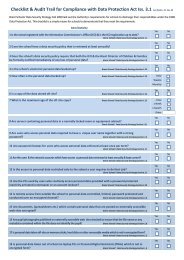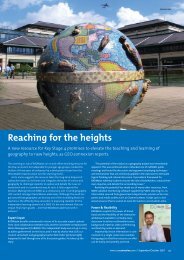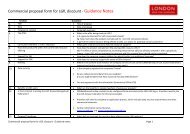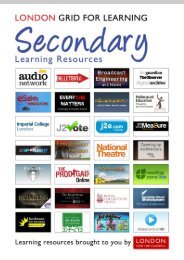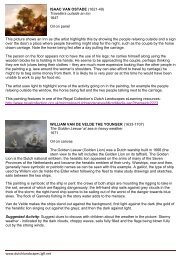Say no to bullying
Say no to bullying
Say no to bullying
Create successful ePaper yourself
Turn your PDF publications into a flip-book with our unique Google optimized e-Paper software.
Post-assembly workIntended learning outcomesI can tell you some ways in which I am the same as and different from myfriends.I am proud of the ways in which I am different.I can tell you how someone who is bullied feels.I can be kind <strong>to</strong> children who are bullied.I k<strong>no</strong>w that when you feel sad, it affects the way you behave and how youthink.I k<strong>no</strong>w some people in and out of school who I could talk <strong>to</strong> if I was feelingunhappy or being bullied.I k<strong>no</strong>w what <strong>to</strong> do if I am bullied.Core learning opportunity: personal, social and emotionaldevelopmentThis is an overview – see the detailed lesson plan for objectives and suggestedactivities.A short s<strong>to</strong>ry, Sean and Lisa, is used <strong>to</strong> provide a context through which childrenrevisit the key characteristics of <strong>bullying</strong>, extending their understanding of therange of <strong>bullying</strong> behaviours. There is a particular focus on the feelings of thechildren who are bullied, what social and emotional aspects of learning could beused <strong>to</strong> help manage the feelings that <strong>bullying</strong> can evoke, and an opportunity <strong>to</strong>think about what <strong>to</strong> do if you are bullied.Speaking and listening follow-upObjectivesTo listen <strong>to</strong> each other’s views and preferences, agree the next steps <strong>to</strong> take andidentify contributions by each group member (Y2 T1 GD 15) (or, if you are usingthis theme in the summer term: To work effectively in groups by ensuring thateach group member takes a turn, challenging, supporting and moving on (Y2 T3GD 23))In Part 2 of the Sean and Lisa s<strong>to</strong>ry, the teacher asks all the children <strong>to</strong> makesure that <strong>no</strong> one in the school is unhappy because of the way that other childrenare treating them.Ask the children <strong>to</strong> work in groups and remind them of the rules for working ingroups. <strong>Say</strong> that they should use the problem-solving process and, in theirgroups, think about what the problem is; think of as many ideas as they can;decide what the outcomes or consequences of each would be; and select thebest idea <strong>to</strong> construct a plan <strong>to</strong> make Sean and Lisa feel happy and included.The children could be offered a range of styles <strong>to</strong> present their work: a role play, aA child in my classfound groupworking verydifficult. We limitedthe time he spent ingroups andfocused on one skillhe had practised ata time, e.g.listening <strong>to</strong>someone elsewithout walkingaway.17© Crown copyright 2005 <strong>Say</strong> <strong>no</strong> <strong>to</strong> <strong>bullying</strong> Years 1 and 2DfES 1340-2005Primary National Strategy



